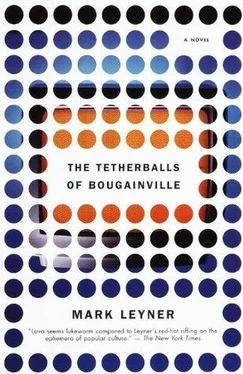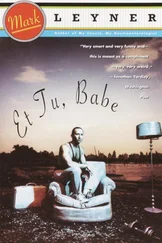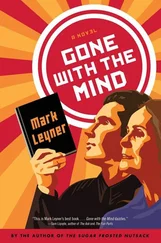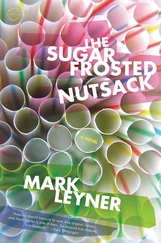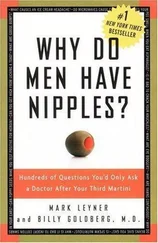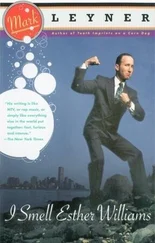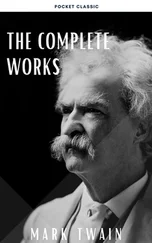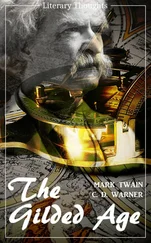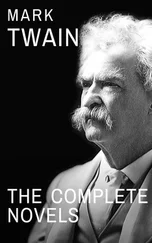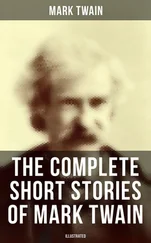“Suspension of disbelief aside, what the hell are we supposed to make of a scene like this?
“Are we supposed to be moved by this father’s extraordinary efforts to keep watch over his young son? Or appalled by the danger in which he (as an NJSDE releasee) heedlessly puts this same child? Or amused by a parody of the typical adolescent’s mortification at being seen socializing with his parents? Or are we to read this as a sort of transsexual twist on oedipal conflict?
“Leyner’s attention-deficit style of editing gives us scant opportunity to ponder any of this.
“As Mark tries to wriggle out of his father’s embrace, The Carousel is hit by several 152-mm howitzer shells, followed by a barrage of AT-3 Sagger wire-guided missiles and rocket propelled antitank grenades, and then several thousand rounds from a turret-mounted.50-caliber heavy machine gun and an M163 Vulcan 20-mm Gatling gun. There’s a brief lull, and then a hit team of NJSDE agents appear, some in neoprene rubber wet suits, some in olive green Nomex flame-retardant overalls and bulletproof Kevlar flak vests. They lob in a dozen F-l antipersonnel fragmentation grenades and then enter, raking the interior with AK-47s and German-made Heckler & Koch 9-mm submachine-gun fire. The massacre inside is luridly illuminated by thin red laser beams from the commandos’ aiming devices and the glow of crisscrossing tracer rounds ricocheting off the walls.
“Mark and Felipe — probably because they were drunk and their bodies relaxed — miraculously escape unharmed. Joel, the putative target of this assault, presumably survives and disappears — we don’t see his metamorphically full-figured physique among the dead and wounded as the camera slowly pans the smoldering carnage.
“It’s worth reiterating — as we ponder this tableau mort , in which corpses wheel in a spasmodic, warped orbit on the crippled baggage carousel, many of them headless and gushing great plumes of thin, pink ‘blood’—how astonishing it is that the 13-year-old Leyner was able to stage scenes like this in his small, second-floor bedroom in his parents’ suburban home, particularly when you consider a production schedule limited to after-school hours and weekends.
“One can’t, of course, overestimate the centrality of the male-adolescent bedroom in the history of western art. It is the sanctuary where the maladjusted, antisocial, genius teenage boy seeks refuge from his shallow peers and uncomprehending parents. It is the laboratory where he invents himself. And it is invariably the site of that great initial aesthetic frisson that not only determines the trajectory of his artistic life, but is often its crowning achievement. We rarely surpass in beauty or audacity those first raw, untutored riffs cooked up in the clamorous, totem-packed sancta sanctorum that we (the maladjusted, antisocial, genius teenage boys of America) simply call our ‘rooms.’
“It should also be noted that the decapitated torso disgorging a geyser of blood is one of Leyner’s signature effects and marks a recurrent, obsessive motif in The Tetherballs of Bougainville . To give just one example: In a scene which takes place during a reading by playwrights David Hare and Wallace Shawn at the 92nd Street Y, the camera scans the auditorium and then stops at a seat occupied by a headless torso, its savagely hewn neck spewing a fountain of blood at least ten feet high. The other members of the audience, including those seated directly next to the spouting trunk and those being drenched by Leyner’s egregiously ersatz fuchsia concoction, are absolutely oblivious and listen with rapt attention to Hare and Shawn reading from their own work. Whether this represents some sort of Buddhist memento mori, an absurdist harbinger of the coming millennium, a symbol of how inured we’ve become to one another’s suffering, or is simply an image that the filmmaker finds so perversely satisfying that he can’t help but insert it almost everywhere, blithely indifferent to its relevance, one can’t say with any certainty. But I suspect the latter.
“It’s no surprise that this zeitgeist-savvy film next finds Mark as a guest panelist on a daytime talk show. The theme: ‘My Dad Is an NJSDE Releasee.’
“ ‘Is there anything you’d say to your dad if he were here right now?’ asks the host, eyes moist with empathy.
“And Mark responds, ‘I’d probably say: “Dad, I love you and I know you love me and want to be near me and watch over me and everything, but please don’t come anywhere near me or Mom because they could call in a fucking NJSDE air strike on our house the minute you walk in.”’
“The host winks at the audience.
“ ‘How about saying it to him , because he’s been listening backstage and here he comes …’
“Mark leaps up and tears his microphone off, shrieking, ‘Are you out of your mind?! Run! Run, people, run!’
“Panic engulfs the studio audience. There’s instant pandemonium as terrified people rush frantically for the exits.
“Predictably, battered and suffocated bodies soon litter the floor, some pounded and literally flattened into two-dimensional scaloppini by the throng’s trampling wingtips and Birkenstocks. (This is far from the only instance of people being trampled to death in The Tetherballs of Bougainville . In fact, rarely do three characters congregate in this movie without one of them stumbling and dying under the feet of the other two. Whenever we’re shown people emerging from a crowded elevator, we invariably discover, once that car has emptied out, the lifeless body of someone who’s been inexplicably crushed to death by fellow passengers. I can understand the Ma Ling Stadium disaster scene in which drunken Bougainvillean tetherball hooligans supporting Wamp Kominika storm the stand filled with Wuwu-Bulolo Puliyasi supporters, and hundreds of people die in the ensuing stampede. But take the scene at the Musées Royaux des Beaux-Arts in Brussels — a group on a museum tour is clustered in front of Pieter Brueghel’s Fall of Icarus , and when, at the behest of their guide, they continue on to the next painting, we find, remaining at the Breughel — surprise, surprise — the crumpled, broken body of some hapless art maven who somehow fell and was pummeled to death by the shoes of his companions as they scurried off to Hans Memlinc’s Martyrdom of St. Sebastian . I mean, what’s up with that? I’ve never seen a movie before in which: (a) people can’t manage to remain upright for more than several seconds, and (b) when they do fall, passersby can’t seem to avoid stomping them into unrecognizable pulp. If scenes like this bother you, you may consider avoiding Tetherballs altogether, although the gore is so unrealistic and mannered that I can’t imagine anyone finding it really disturbing. We’re not talking Industrial Light and Magic here. I don’t claim to be a special-effects expert or anything, but I think we’re talking raw chicken cutlets, dressed in Ken and Barbie outfits, and then pounded with a meat mallet. Whether this is an improvisation born of budgetary constraints, or a deliberate aesthetic device — a sort of Brechtian Verfremdungseffekt —or simply an excuse for the adolescent filmmaker and his crew to bludgeon meat with a hammer, one can’t say with any certainty. But again, I suspect the latter.
“Anyway, as he flees this latest disaster, Mark valiantly stops to save a girl who’s tripped and fallen under the stampeding feet. The girl’s name is Sylvia, and she’s played by Reese Witherspoon with equal portions of gamine bluster, little-girl vulnerability, bewitching carnality, and a sort of arid, postwar Gallic Maoist, protofeminist, chignon-wearing hauteur that easily falls away to reveal a kind of Squeaky Fromm — like, giggly, non-compos-mentis ‘hey, whatever’ insouciance in a performance that marks a stunning comeback from Ms. Witherspoon’s disastrous turn as ‘Tante Helke’ in controversial Austrian director John Jacob Jingle-heimer Schmidt’s unwatchable S&M epic My Name Is Your Name Too .
Читать дальше
